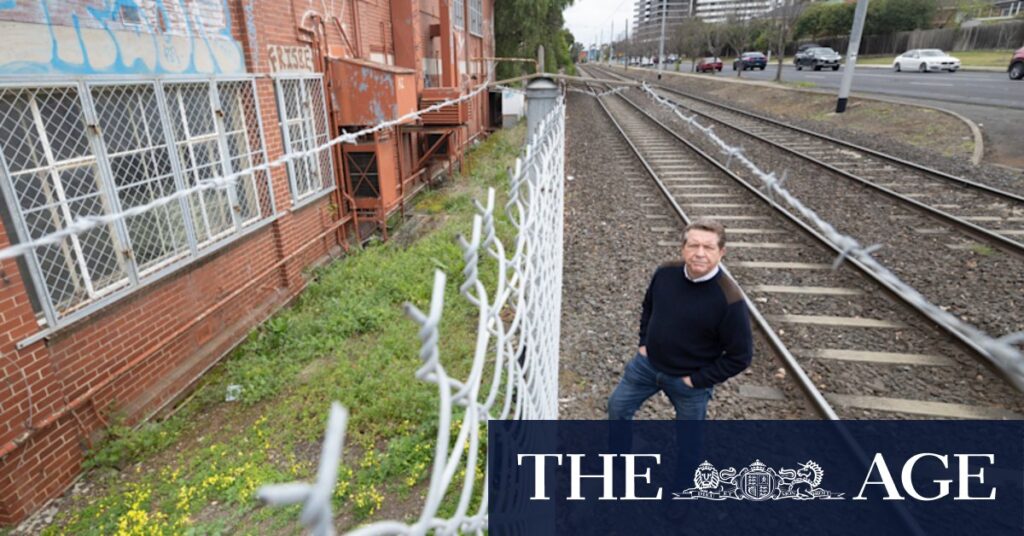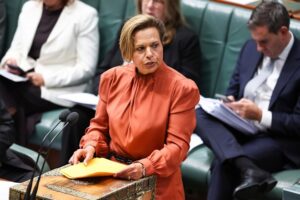
In Melbourne’s rapidly expanding western suburbs, a significant delay in the development of a new housing project has emerged due to toxic land at the historic Maribyrnong Defence site. This 128-hectare area, located just 10 kilometers from the city center, was once earmarked for the construction of 6,000 new homes. However, the presence of hazardous chemicals from its former use as an ammunition and explosives factory has stalled progress.
Michael Clarke, who served as the mayor of Maribyrnong in 2009, recalls being informed in Canberra about the federal government’s plans to transform the site into a new suburb. “Everyone was ‘ooh, aah’ … but god, it’s gotten nowhere,” Clarke commented, expressing frustration over the prolonged inaction. Despite acknowledging the significant remediation costs, Clarke believes the project is crucial, especially given the current housing crisis.
Historical Context and Challenges
The Maribyrnong site has a storied past, having been established in 1908 to produce explosives, including bombs and hand grenades, with a workforce of 8,000 during World War II. Discussions about its redevelopment began soon after its closure, with the state government entering negotiations to acquire the land in 2004. In 2009, the Commonwealth committed to cleaning up the site before selling it to Victoria.
However, in 2017, the Turnbull government rejected the Victorian government’s final offer, opting instead to sell to a private developer, thereby transferring the remediation costs. This decision has led to years of delay, with the clean-up bill initially estimated at $100 million in 2009, now projected at approximately $200 million.
Current Developments and Future Prospects
The Defence Department has indicated that recommendations on the site’s future will not be available until early 2025. A spokesperson for Assistant Defence Minister Peter Khalil stated that a decision will only be made after the Commonwealth completes its response to an independent audit of its national real estate portfolio, finalized in December 2023.
Meanwhile, five property developers were shortlisted to submit proposals by July 2024, although their identities remain undisclosed. Notably, Chinese developer Enrichment Holding had previously unveiled a $2.5 billion vision for the land, including a canal and a substantial decontamination budget, but did not make the shortlist.
Community and Expert Opinions
Local residents and officials are urging the federal government to expedite the clean-up. Andrew Gunter, a resident of Essendon West and administrator of the Maribyrnong Defence Site Neighbours Facebook group, advocates for a mix of medium-density housing and a riverside park. He argues that the Commonwealth should bear the remediation costs, as the contamination resulted from its use of the land.
“It’s contaminated because of Commonwealth use of the land … and they should carry the burden that goes with that,” Gunter stated.
Maribyrnong Deputy Mayor Bernadette Thomas emphasized the site’s importance in meeting the state government’s housing targets, noting that the city’s population is expected to grow by 55% by 2051. “This prime site – which has sat unused for 20 years – is crucial to realising the state government’s targets to accommodate 48,000 dwellings across our municipality by 2050,” she said.
Implications and Next Steps
The ongoing delay in developing the Maribyrnong Defence site underscores broader challenges in addressing Melbourne’s housing needs. With the Victorian government aiming to build 800,000 new homes by 2034, the resolution of this site’s issues is critical.
As the federal government prepares its response to the Defence Estate Audit, stakeholders remain hopeful for a timely resolution. The Age will continue to monitor developments and facilitate discussions, including an upcoming summit by the West of Melbourne Economic Development Alliance, to explore the region’s economic potential.
The Maribyrnong Defence site’s future remains uncertain, but its potential to transform Melbourne’s western suburbs is undeniable. As the housing crisis intensifies, the pressure mounts on the Commonwealth to act decisively and responsibly.







